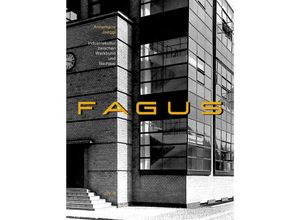Fagus is the story of a Gesamtkunstwerk and an early example of corporate identity: the Fagus
factory in Alfeld an der Leine built by Walter Gropius and Adolf Meyer from 1911 is regarded
as the founding structure of modernism. The architects succeeded in giving a medium-sized
company a completely unusual face that was anything but traditional. This was possible because
the client and architect formed an extraordinarily favorable constellation. The factory owner
combined an affinity toward the life reform movement with American corporate philosophy. With
its representative objectivity and extensive use of glass the factory is also an expression of
a new entrepreneurial self-confidence and a modern advertising strategy. The avant-garde
further influenced the design of the company's machines and its printed matter. The list of
collaborators reads like a Who's Who of international modernism: some of Fagus's advertising
for instance was designed by Johannes Molzahn Theo von Doesburg and Herbert Bayer. And with
his series of photographs from 1928 the photographer Albert Renger-Patzsch created what can
today be called a classic image of the Fagus factory and its products.

